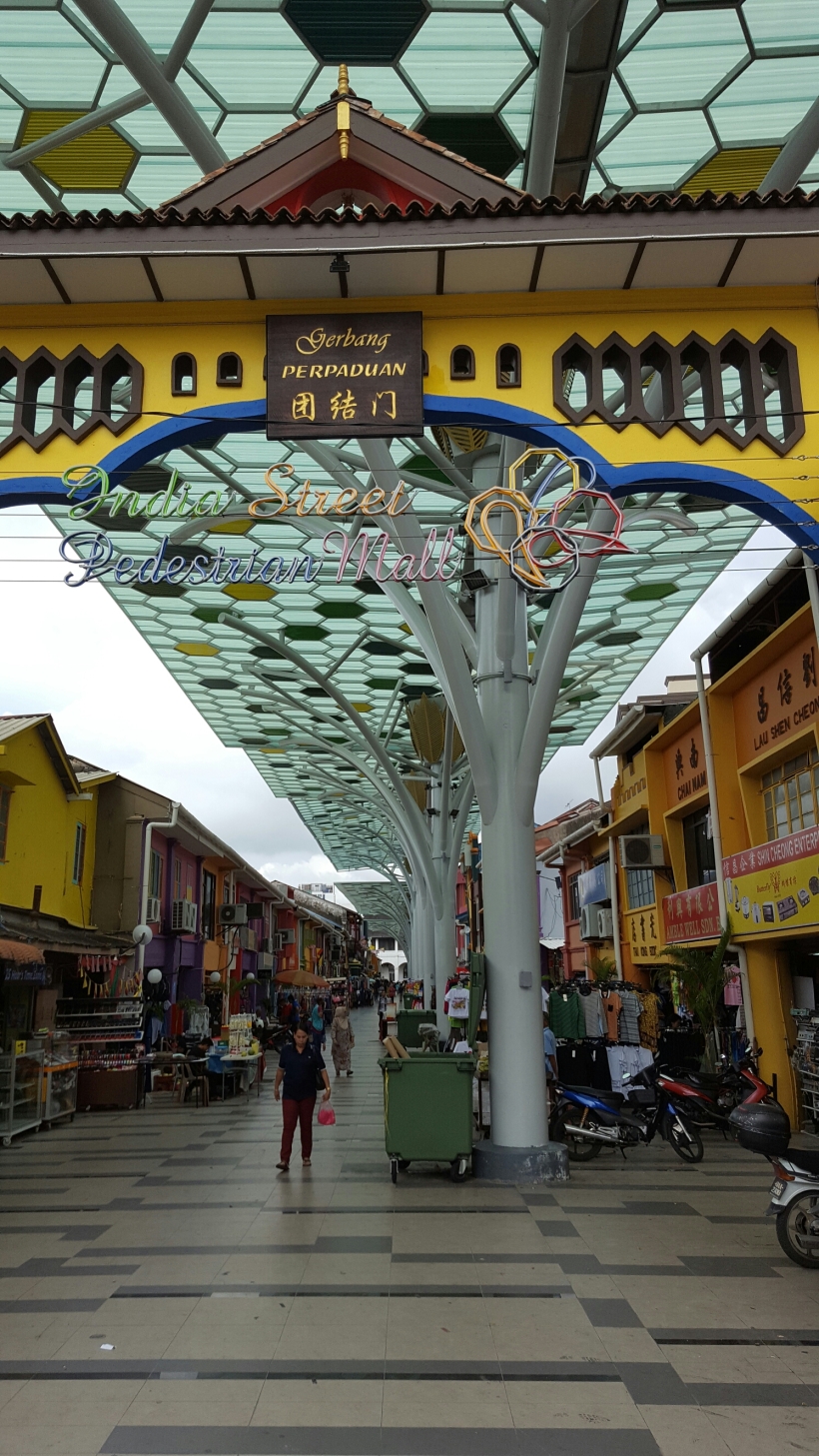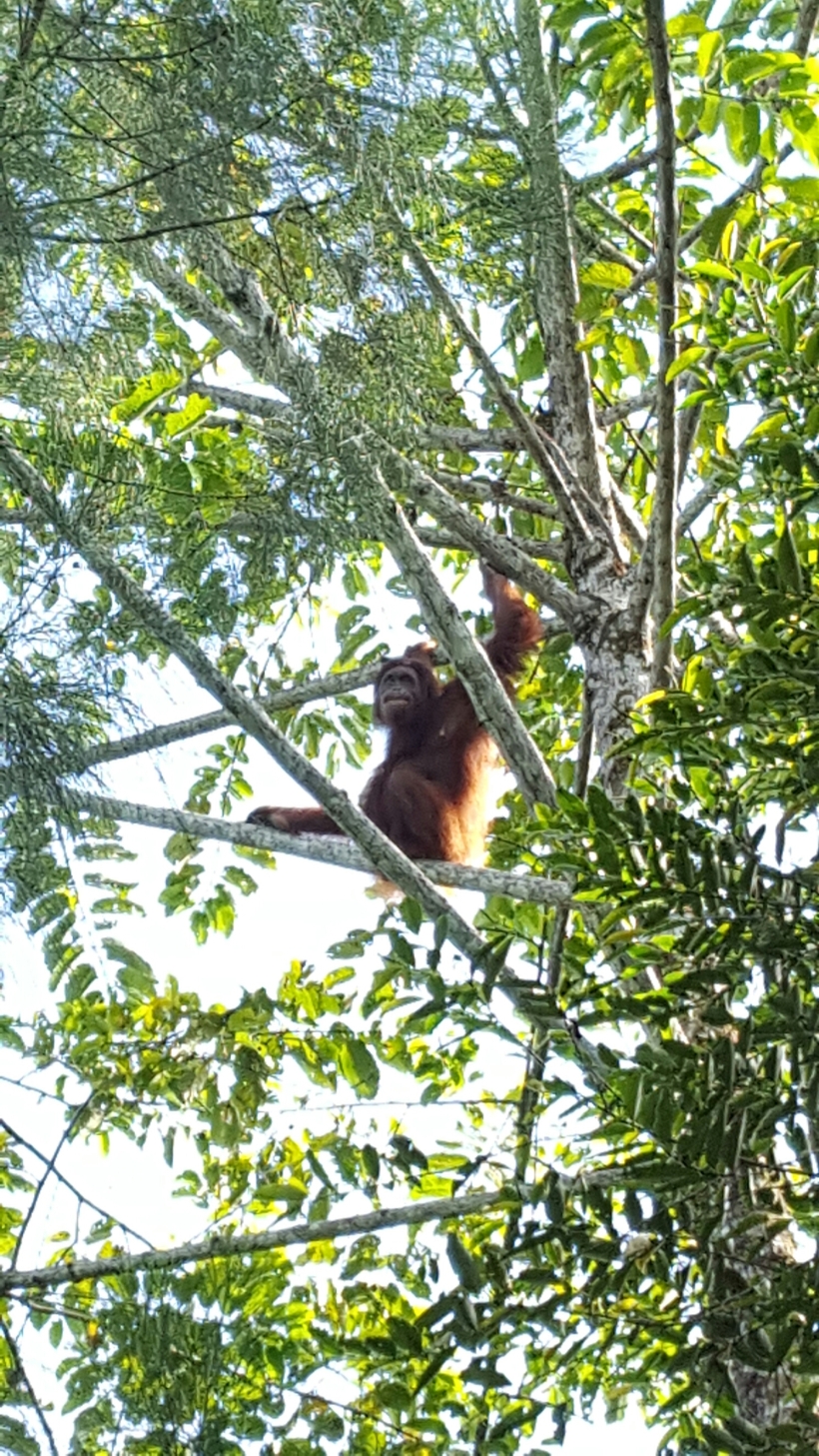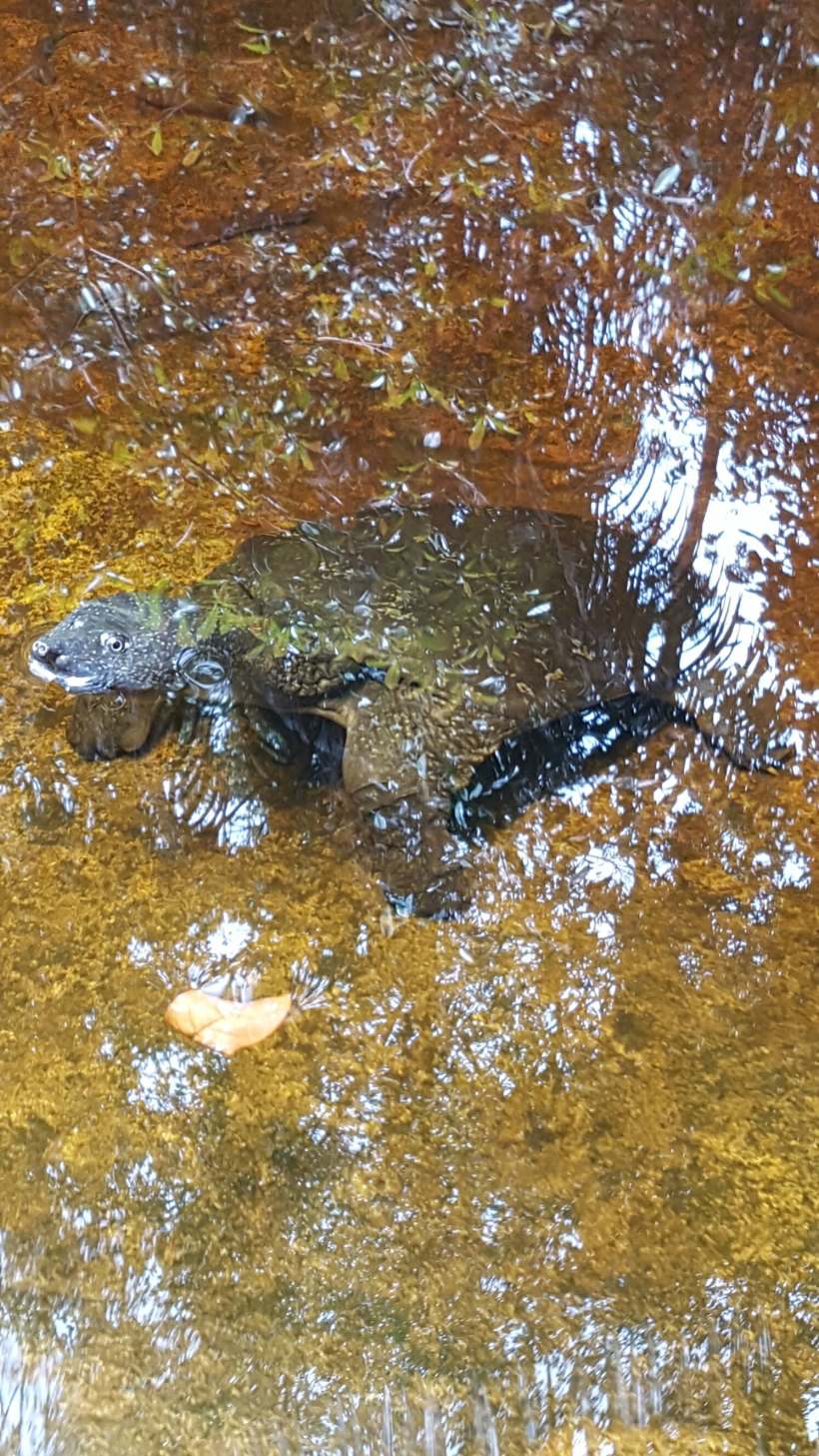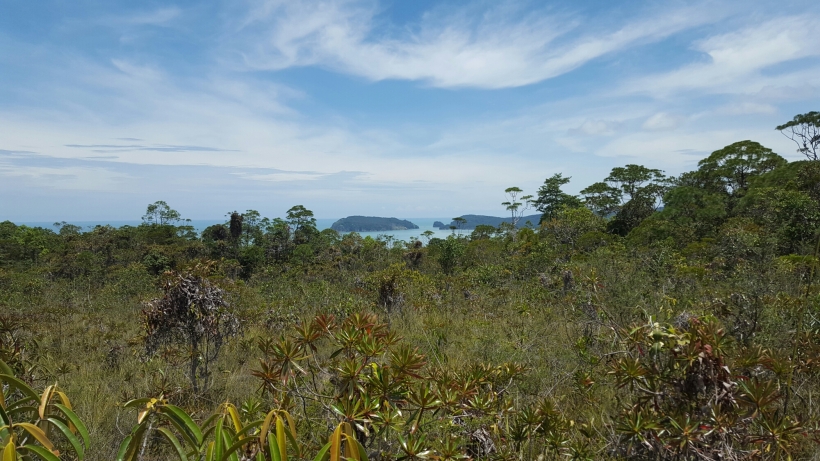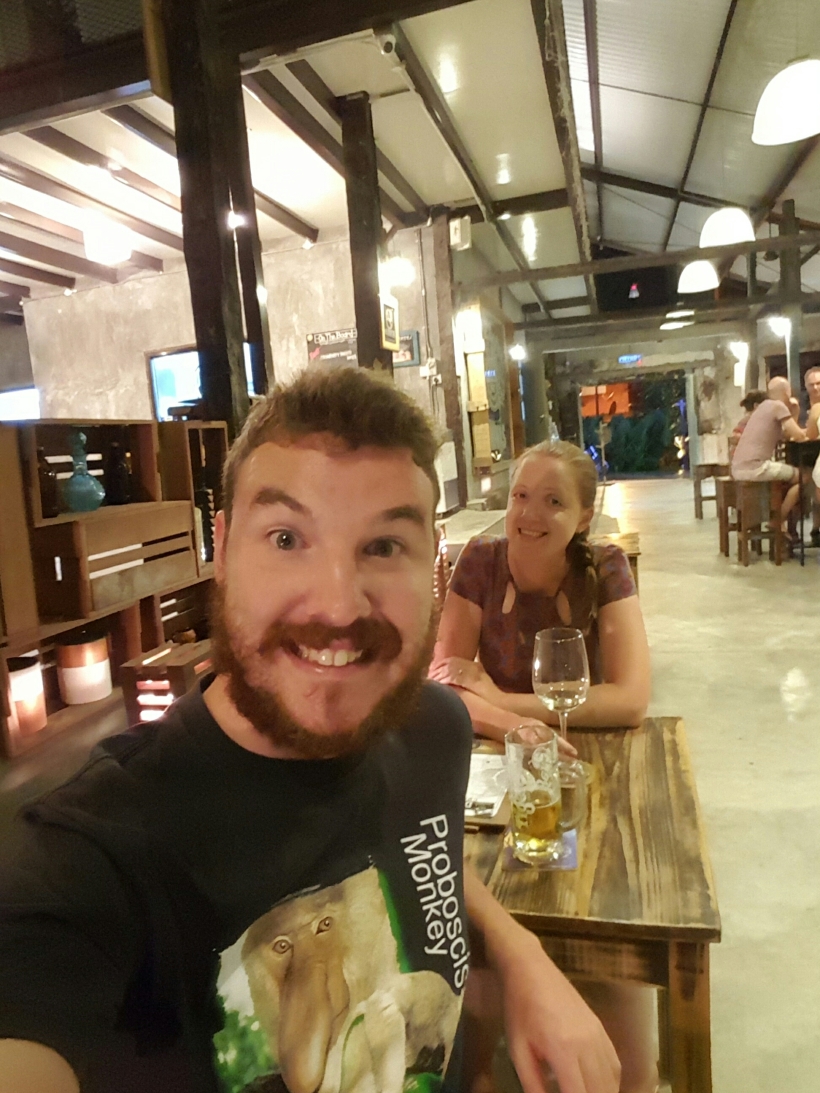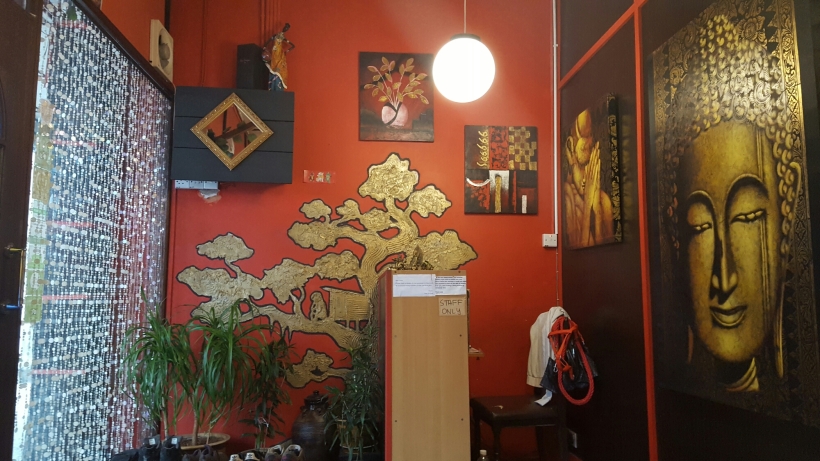Overview
Population: 325,132
Currency: Malaysian Ringgit (MYR)
10 RM = £1. £1 = 5.08 RM
Time Zone: GMT +8 (7 hours ahead of UK summer time)
24th – 28th Oct
Kuching (literally ‘cat city’) is the capital of Sarawak (the Southern portion of Malaysian Borneo) and the largest city in Borneo. As usual our first job was to find food. Kate’s “snack” in the airport had been a full McDonalds Filet-O-Fish meal so it was just me that was super hungry. Three minutes away from our hostel we found a rather hip little restaurant called The Wrong Place. They did a mix of Western and Malaysian food which seemed to suit us both, but with slightly inflated prices. Unfortunately they were all out of all of their Western food. My twice-the-price beef rendang was ok. It was the Wrong Place after all.
After food we popped next door to a pub called the Drunken Monkey, where we met a Welsh chap who’d visited Kuching once previously and loved it so much he was back for 6 months. We figured this was a good sign.
After the Drunken Monkey we set off in search of the main strip to try and explore Kuching’s nightlife. On our way we encountered a large group of stray dogs hanging out on a busy road. Kate tried to usher them back to the pavement but they just began to follow her round. At this point a group of Chinese people at the cafe on the roadside noticed what was happening and all gasped in awe before one shouted “dog whisperer!”
Once Kate’s pack had been deposited in a safe place we headed into a bar called 21 Bistro with a live band and a seemingly middle aged clientelle. A lot of the men were sharing a bottle of whisky in groups of 2 or 3. It turns out a bottle of whisky is as cheap or cheaper than the equivalent in beer. But it seemed a tad excessive for a Monday night.
The next day we had no big plans other than to explore the city. We were a short walk from the Sarawak museum and had heard good things, the highlight being a watch, dental plate and giant hairball recovered from a humongous man eating croc that was captured in 1993.

Following on from the museum was a foodcourt on top of a multistorey car park. I thought I’d read about this in the guidebook but we’d gone to a different one. Turns out car park food courts are a thing. It was nice though and the grand total of £1 I had a full meal with chicken, rice, fish, veg and soup. Kate didn’t fancy the car park food so went for her traditional FOF at Maccie D’s.
Our next port of call was India Street, an undercover shopping court with plenty of cheap knockoff goods.
At the end of India Street there were a couple of wall paintings of cute little orangutans. I had just noticed a little marker on Google Maps and knew nothing about them but they were a good find.
We wondered along the waterfront with the intention of heading across the river to a 19th century fort but the opening times were short and we were running out of time so instead we sauntered back to the hostel via some locally sourced Sarawak coffee.
We wondered out later to find food and ended up at James Brooke’s Bistro. James Brooke was the “White Raja” and is well renowned in Sarawak for bringing stability in a time of rebellion. The food was largely traditional fare and I went for the Sarawak laksa, the traditionalest of the traditional dishes on offer. It’s effectively curry chicken soup and it was delicious.
I tried some Tuak (local rice wine) with my dinner and was pretty unimpressed. Following on from dinner we tried a new bar on the way back to the hostel. Their promotion was cheap Guinness but they also gave us some free Tuak. This one was much nicer though.
The following day we had organised a trip to Semenggoh Nature Reserve and Annah Rais Bidayuh Longhouse. The reserve was an hour or so away through Kuching’s appalling traffic. Their aim is to rehabilitate orangutans and get them back into the wild. The orangutans are described as “semi-wild” in the sanctuary because they are encouraged to find their own food but they can also pick up food from the rangers.
We were hurried through to park HQ because just off the path there was a very large tree making very large cracking sounds and leaning precariously over the bridge to the feeding area. After some waiting around we were hurried back out and up to the car park instead because some orangutans had been spotted nearby and that seemed like a much safer place for 50 people to stand than under a massive falling tree.
As soon as we got there we spotted an orangutan way up in the trees.
We were told there were three in the vicinity; two sisters and a two-week-old baby. Sure enough the other two popped out soon enough.
It was fantastic being so close to these unusual creatures. They were fascinating to watch, catching fruit and veg from the rangers, swinging through the trees (with baby clinging on) and munching away (on the food, not on baby).
Once we were dragged away from the spectacle it was off deeper into the rainforest to see a traditional longhouse. It’s a big part of Malaysian heritage as this was, and still is, how many Iban people lived.
On stepping foot on the bamboo slats above the ground we were offered a welcome drink of more Tuak. It was pretty good and I was offered a second which I couldn’t refuse!
We wondered around with our guide and fellow guidees and although there are some modern facilities (electricity, running water and a bank) they try and keep things the same as they have been for hundreds of years.
We saw the skull room with a collection of blackened human skulls. It was a sign of power to have more skulls than your neighbouring village. To commemorate a big event a villager would be tasked with collecting a skull (or headhunting) from an enemy. Usually they were dead already but sometimes not. They were then put above a fire to stop the spirits getting nasty, hence them being blackened. This practice was outlawed by James Brooke but the skulls were kept.
There is still a fair population in Annah Rais and they have a number of guesthouses, cafes and stalls selling home-brewed whisky and pepper that has been cultivated and dried on site.
They try and be as self-sufficient as they can be and so we saw a huge variety of fruit and plants growing in and around the village.
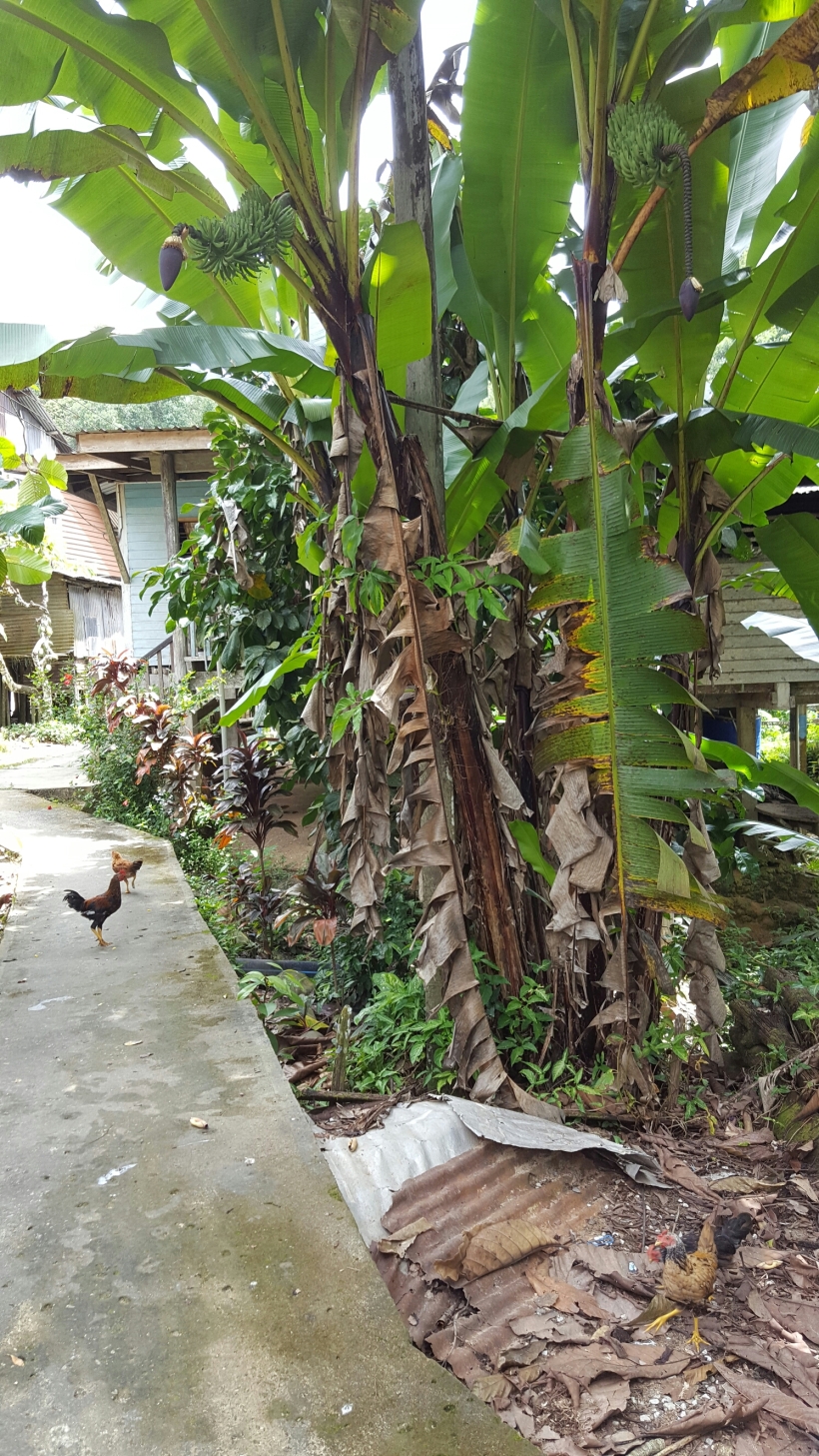

We explored some more before being picked up and whisked off by our driver. We headed back via an awkward stop off at a commissioned tourist knick knack store and landed back at the hostel just in time for the heavens opening.
We stayed in for lunch and ate instant noodles before going for an epic nap because that seemed like the thing to do with the rain. When we woke it was time for tea! We happened upon the Granary Kitchen, another hip local/western fusion restaurant where we had some great pizzas. Kate picked margarita and mine was inspired by nasi lemak, a malaysian dish of fish and eggs amongst other things.
Our final day in Borneo was a hectic one with another early start to get the first bus of the day to Bako National Park, Sarawak’s first National Park. The route to it involves a 25 mile bus journey to the outskirts and a 30 minute boat ride around the park to the headquarters. When you get there the boat just rocks up near the beach and you wade to the shore. A befitting start for our day of adventure!
We trudged across the beach to the headquarters building to find a bearded boar, a species only found in Borneo. Bako is a popular spot to see another endemic species, the proboscis monkeys, but we’d seen them and wanted to explore something new so weren’t too fussed about them. You have to sign in and put your chosen trail (out of 14 options) but we were told the east side of the island was closed and the beaches were to be avoided due to sightings of a giant crocodile. We were told the best ones were a short route from HQ to spot the proboscis monkeys or the loop trail to see all sorts of rainforest vegetation. We asked about trail 7, Tajor trail, a slightly longer trail leading up to a waterfall with a natural pool to swim in. The lady told us you can swim in the pool but effectively told us not to walk the trail because it’s too far and difficult and we should do the loop trail instead.
We weren’t going to be told what to do and set off on Tajor trail. To get to Tajor you need to walk a small section of the loop trail before splitting off. On this section there was a staircase blocked by a fallen tree and we had to hoist ourselves up a near-vertical muddy bank. At this point we questioned our brave decision but it turned out everything after that (bar one rickety plank over a stream) was far easier.
After just over an hour of walking through rainforest tunnels over tangled roots we arrived at our own little slice of paradise.
We were joined shortly after by a Polish couple and then a British couple. We had a short dip in the natural pool but were all a little put off by the staining of the water and the slight fear there may be a giant croc in there so no-one spent long in the deeper sections. Although we didn’t see any crocs we did see this scary chap!
He kept swimming up to Kate and after we’d eaten our leftover pizza from the night before we had to cross the water and he swam as fast as he could to wave us/scare us off.
It was a linear trail so the way back was the way we’d come. It was a fantastic walk with some spectacular views when we were out from under the trees.
The tree that had previously blocked the stairs had been moved so our descent was trouble free and we made it back to headquarters in plenty of time to get the boat back. We had just missed one so we had a bit of a wait for the 3pm boat so we got some drinks and sat down at the cafe. The boar we’d seen in the morning appeared to still be there until a guy with the most spectacular beard showed up and took his place.
There were some pesky monkeys stealing food from plates and we were a bit peckish so we wandered over to a hut near the beach to munch on the snacks we’d brought. But a crazy one-eyed yellow-toothed monkey had followed us and started hissing when we wouldn’t give him our satay broad beans. So we put them back in our bag and ran away.
Once our boat arrived we headed back to the start of the park to get the bus back to Kuching. In the evening we tried John’s Place again for some cheap Chinese grub before heading back to the Granary for a drink. Just as we arrived the heavens opened and we had to stay for another, which we were both terribly upset about.
Once the rain had settled we headed back to pack our bags and get some sleep before yet another early start for our journey the next day.
The hostel
Recommended by Hostelworld and Lonely Planet we thought we were onto a winner with Threehouse B&B. The location in the heart of Chinatown was great and the staff were very friendly. However, it was a dirty place. The sheets were old and torn, the bathrooms were grubby with one not working, the kitchen had loads of empty or out-of-date sauces and we washed our clothes and they came out covered in multiple black blotchy stains. It could be a great little place but we felt very let down.

